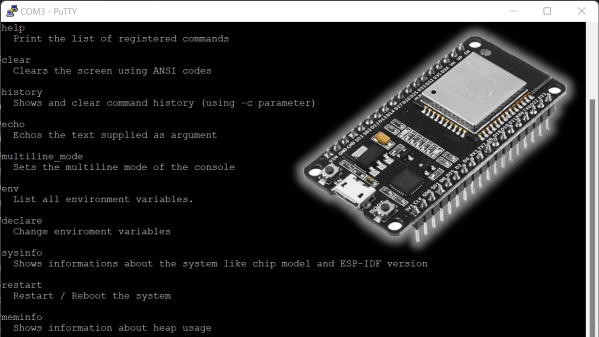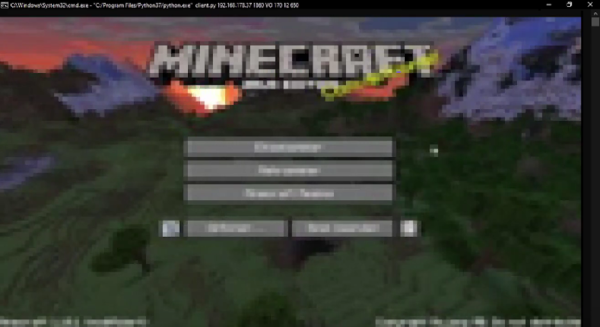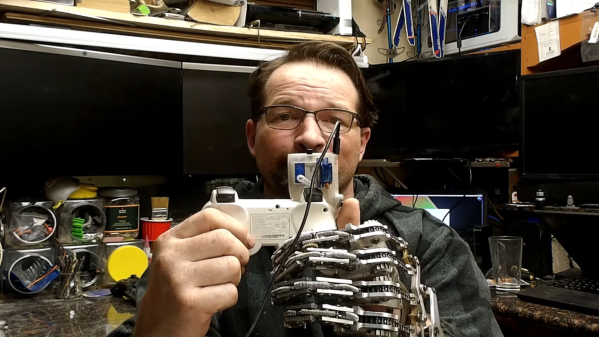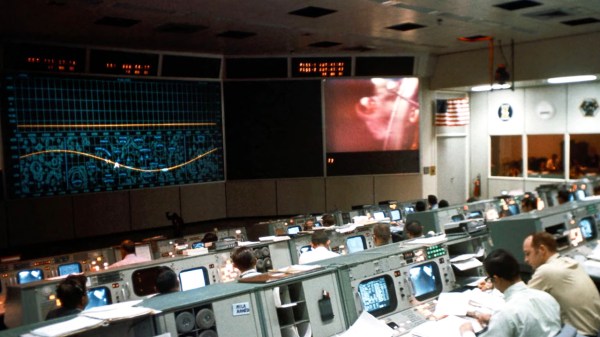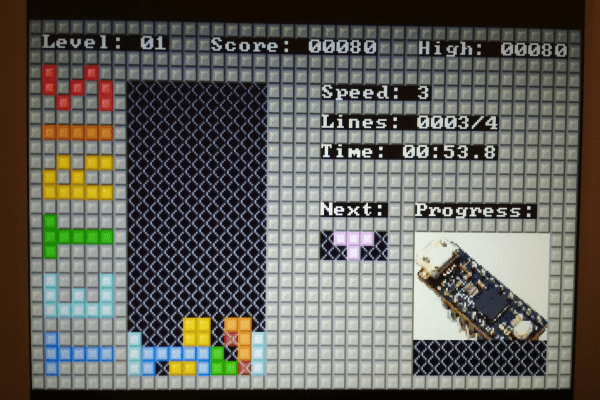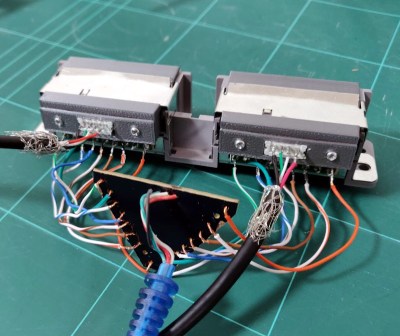Sometimes you need to get a project to talk to you, so you can see what’s going on inside. The ESP32 console Arduino library from [jbtronics] promises just that.
The library adds a simple serial console to the ESP32, and is compatible with the Arduino ecosystem to boot. It’s set up to allow the easy addition of custom commands so you can tweak the console to suit your own projects. It’s remarkably complete with nifty features, too. There’s autocomplete as well as a navigable command history – the sorts of features you only expect from a modern OS terminal. A bunch of system commands are built-in, too, for checking the status of things like the memory, network interface, and so on.
The tool is available via the Arduino library manager or the PlatformIO registry. You’ll want to use it with a VT-100 compatible terminal like PuTTY or similar, which lets you use all the fancy features including color output. [jbtronics] hopes to port it to the ESP8266 soon, too!
We’ve seen some other great serial tools of late, too. If you’re brewing up your own nifty console hacks, be sure to drop us a line!

